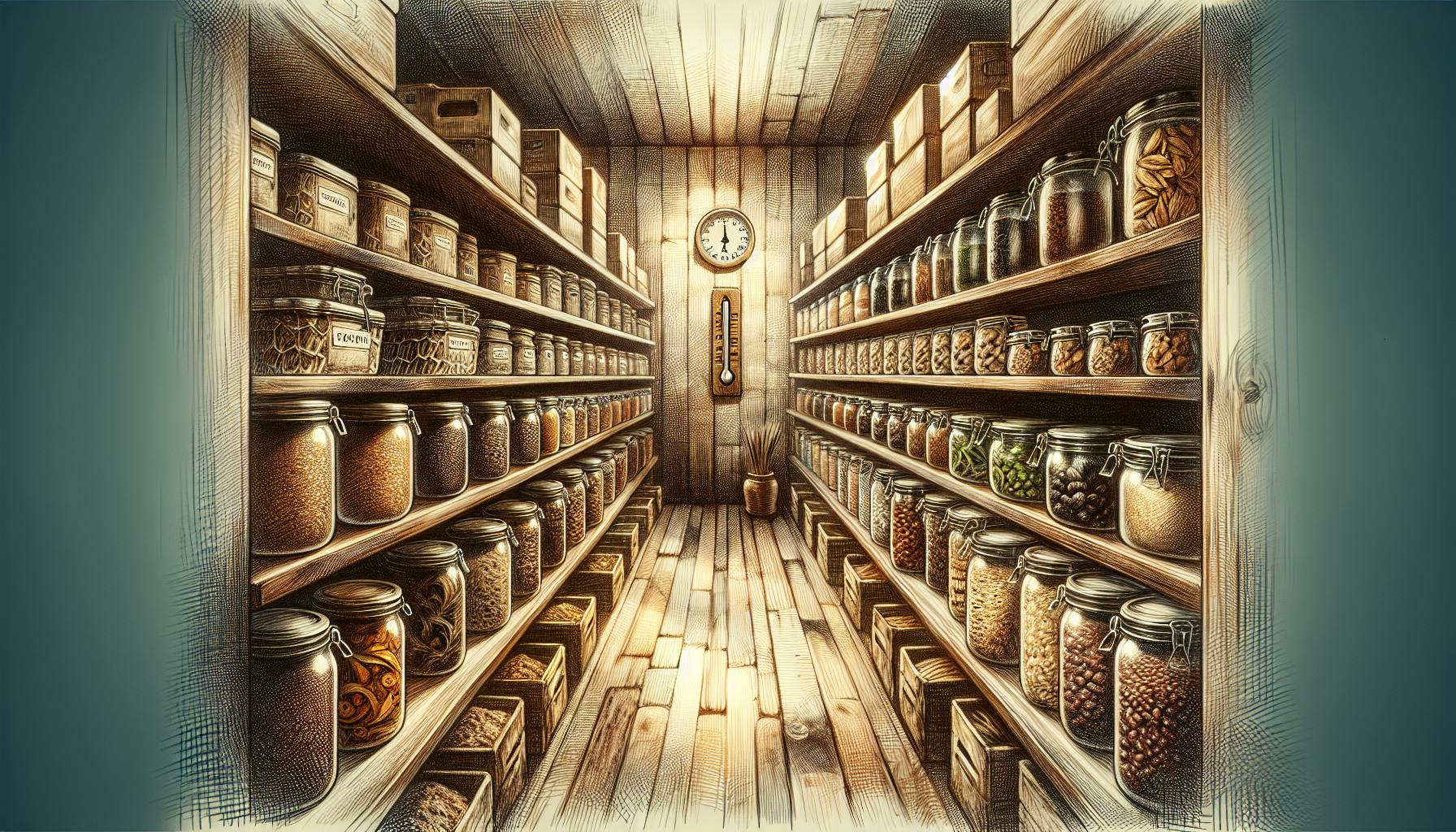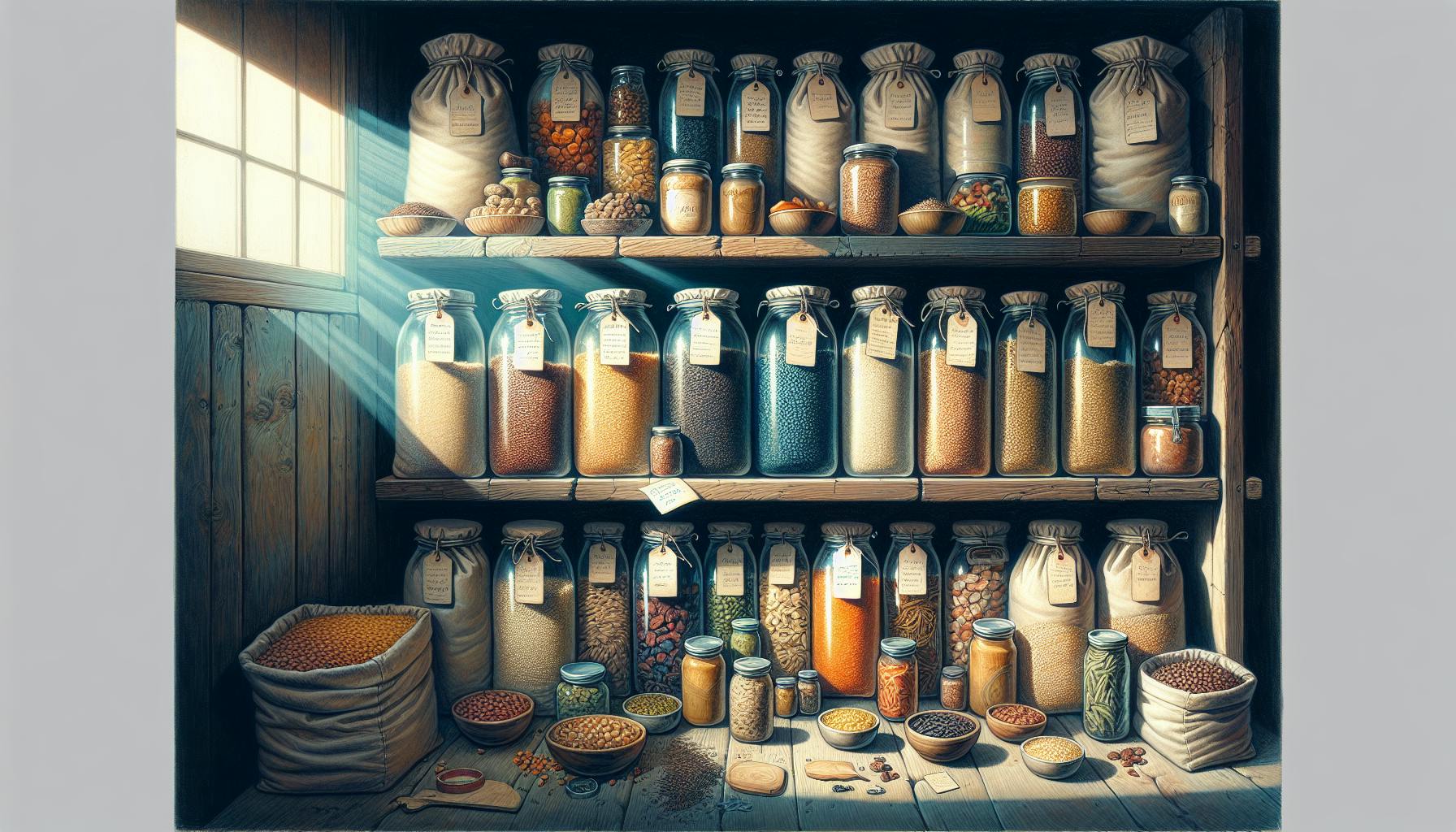Introduction to Building a Comprehensive Emergency Kit
Being prepared for disasters and emergencies should be a top priority for every household. Having the right supplies on hand can mean the difference between life and death when catastrophe strikes. An emergency kit allows you to respond quickly and meet your family's basic survival needs, whether you need to evacuate or shelter-in-place.
This guide will walk you through key factors in assembling a well-stocked kit, including assessing your needs, prioritizing critical supplies like water and food, picking quality gear, and customizing checklists for different disaster scenarios. We'll also cover the importance of stockpiling surplus essentials to overcome unforeseen circumstances. Having reserves and backups of critical supplies will provide flexibility and allow you to assist others in times of need. Being ready for the unexpected will give you confidence and peace of mind no matter what challenges come your way.
Assessing Your Emergency Preparedness Needs
The first step is taking stock of potential risks in your region that could require emergency preparedness. These might include earthquakes, hurricanes, tornadoes, floods, wildfires, blizzards, or pandemics. Make note of any hazards specific to your area.
Next, take inventory of your current supplies and determine what gaps need to be filled. Check for expired or missing items in any existing kits. Also factor in your household size and specific needs like medications, infant formula, pet food, or supplies for family members with disabilities. Use preparedness checklist recommendations as a guide but customize based on your unique situation.
Setting survival priorities like water, food, first aid, tools, and communication will help focus your efforts. Allocate budget for supplies and research to allow you to acquire equipment over time. Consider stockpiling extra survival gear beyond basic necessities to provide reserves in an emergency.
Water - The Most Vital Survival Supply
Water tops the list of critical supplies, as people cannot survive long without it. The general guideline is to store at least one gallon per person per day for drinking and sanitation. For example, a family of four would need to stockpile a minimum of 4 gallons of water daily.
Store commercial bottled water or use BPA-free plastic containers to fill with tap water. Have portable water filters like the Sawyer Mini or LifeStraw in case of contamination. Also get water purification tablets like Potable Aqua to ensure potability.
Cans, pouches, or bottles that are easy to grab if evacuating quickly are ideal. Rotate stock every six months and replenish as needed. Distribute water reserves in secure locations around your property, vehicles, workplace, etc. Having extra allows for sponge bathing, cleaning, and potentially sharing with neighbors.
Long-Lasting Nutritious Food for Sustenance
Stockpile at least a two week supply of non-perishable, high-protein foods like peanut butter, nuts, protein bars, and canned tuna, chicken, beans, vegetables and fruits. Include comfort foods like crackers, trail mix, and granola bars for morale. Buy freeze-dried entrees and foods requiring minimal preparation. Don't forget can openers, utensils, camp stoves, and cooking gear.
Consider specialty prepper foods like MREs, survival bars, or heirloom seeds for growing vegetables. Having fishing tackle, snares, or chickens provides potential backup food sources. The key is stockpiling at least 2000 calories per person daily for both short and long-term situations. Rotate stock as expiration dates approach. Extra reserves allow you to help feed others if needed.
First Aid Supplies - Preparing for Injuries and Illnesses
Emergency medical supplies are vital for addressing injuries, chronic conditions, or illnesses without access to doctors. A comprehensive first aid kit starts with bandages, gauze, tourniquets, gloves, trauma shears, pain relievers like ibuprofen and acetaminophen, antibiotics, medical tape and tools.
Include personal medications, prescriptions, medical devices like glasses or hearing aids, and copies of medical records. Supplement with reference guides, sutures, IV fluids, electrolyte replenishers, EpiPens, thermometers, tweezers, and emergency blankets. Check and refresh perishable supplies every month. Having extra gear enables you to assist others during a crisis.
Essential Tools and Gear for Utility and Protection
Multi-tools, knives, dust masks, protective goggles, and work gloves allow you to handle repairs, debris removal, and hazardous conditions if disasters strike. Pack tarps, duct tape, paracord, and bungee cords to construct emergency shelters. Illumination sources like flashlights, headlamps, and lanterns with extra batteries are mandatory.
A crank or solar-powered radio like the Midland ER310 keeps you informed without grid power. Other key items include whistles, pepper spray, maps, compasses, shovels, and document protectors. Consider stockpiling extra fuel, generators, tools, and camping gear. These prove invaluable when resources become scarce.
Key Considerations for Picking Survival Gear
Choose versatile, portable gear suited to your family's specific needs and budget. Focus on quality over quantity when possible. Reliable products from trusted brands hold up better long-term, so research before purchasing. Also factor in organization, accessibility, and maintenance when planning your kits.
Portability and Organization
Look for compact, lightweight options to enhance mobility if evacuating. Collapsible water containers, portable camp stoves, and vacuum-sealed clothes take up minimal space. Use duffel bags, backpacks, or plastic storage containers to hold essentials. Straps, MOLLE panels and interior compartments keep gear organized. Having mini kits in vehicles and offices provides redundancy.
Quality and Reliability
Ensure critical items like water filters, radios, and flashlights are impact-resistant and operable in all conditions. Read reviews and choose reputable brands known for durability. Test periodically and replace expired or damaged gear. Quality equipment performs when you need it and provides long-term value.
Customization for Individual and Family Needs
Consider all family members and pets when building kits. Include children's items like diapers, formula, clothes, games. Account for elders' needs like extra medications, mobility aids, warm clothing. Entertainment items reduce boredom if sheltering. Those with dietary restrictions need specific food supplies. Customizing improves preparedness.
Storage and Accessibility
Use clear plastic bins with inventory lists to stay organized. Place them in easily accessible spots like garages, closets, under beds. Having grab-and-go bags by exits is critical for rapid evacuation. Storing backup kits in vehicles, offices, etc. provides redundancy if main supplies are unreachable. Proper storage saves precious time.
Maintenance and Expiration Dates
Check emergency kits every six months. Replace food, water, medical items nearing expiration. Confirm gear is functional, recharge batteries, refresh fuel reserves. Keep storage containers clean and organized. An inventory checklist helps track contents. Stockpiling extras allows continuous replenishment so kits are never depleted.
Emergency Kit Checklists by Disaster Type
While basic evacuation and sheltering kits serve most scenarios, tailoring supplies to likely regional risks optimizes preparedness. Customizing for earthquakes, floods, storms and other threats may require specialized gear. Adapt checklists to hazards in your area and update as needs evolve. Having reserves provides flexibility when the unexpected occurs.
Evacuation Kits - Essentials for Exiting Quickly
Evacuation kits should contain minimum supplies for 3 days, like water, food, first aid, tools, protective clothing and other gear to safely exit affected areas. Opt for lightweight, transportable essentials you can carry such as backpacks or duffel bags. Have cash, IDs, documents, and contact lists to transition to temporary shelters.
Sheltering Kits - Supplies for Hunkering Down
Expect to potentially shelter 2-4 weeks without utilities or outside help. Stockpile 30+ day reserves of food, water, and medical supplies to treat illnesses. Entertainment and sanitation items reduce boredom and maintain hygiene. Consider camp stoves, cots, tents, and off-grid power sources. Surplus allows for self-sufficiency.
Earthquake and Flood Kits - Gear for Weather Disasters
Earthquakes and floods present falling debris, unstable structures, hazardous materials risks, and displaced wildlife. Pack sturdy shoes, gloves, goggles, and respirator masks. Include pry bars, fire extinguishers, axes, rope, and inflatable rafts. Having extra tools, medical supplies, food and water aids rescue and recovery.
Power Outage Kits - Supplies for Losing Utilities
Extended outages compromise climate control, food safety, and communications. Stockpile shelf-stable foods, coolers, and alternate cooking sources like propane camp stoves. Crank radios and LED lanterns with spare batteries maintain contact. Backup generators and fuel allow you to help neighbors also without electricity.
Pandemic Kits - Specialized Gear for Disease Outbreaks
Stop the spread of illness with N95 masks, gloves, disinfecting wipes and cleaners. Stock over-the-counter medications to treat symptoms from home. Games, books, and entertainment help pass time in quarantine. Having surplus protective equipment helps safeguard the vulnerable.
Top Recommended Emergency Gear and Supplies
Based on extensive hands-on testing and experience with survival products, here are some of the top-rated preparedness items we recommend. We'll highlight versatile picks in common categories that balance quality, reliability and affordability. Stockpiling extras provides flexibility when needs evolve.
Water Filtration and Purification
The Sawyer Mini is perfect for hiking, camping, and bug-out bags under $50. Berkey gravity systems are ideal for at-home use, removing huge amounts of contaminants. Potable Aqua purification tablets are inexpensive and portable. LifeStraws allow straight sipping from questionable water sources. Have backup options like bleach or boiling.
Two-Way Radios
For unmatched range, the Motorola T800 25-Mile Talkabout is our top choice. The Midland GXT1000VP4 provides ultra-long battery life. Garmin Rino 750 GPS-enabled radios have excellent reception and weather alerts. Cobra Floating MicroTalks are perfect for marine use. Having extras allows communication with more people.
First Aid
Adventure Medical Kits are renowned for their comprehensive all-in-one design. The ultra-portable MOTO MTX Trauma Bag is perfect for vehicles. For general family first aid, the Everlit Daytripper is quality and budget-friendly. For extensive supplies, the Surviveware Large Medic Kit is hard to beat. Added capacity lets you help others.
Lighting
For hands-free use, the Streamlight ProTac HL USB Headlamp offers impressive outputs. The Fenix PD36R tactical flashlight is ultra-durable with a rechargeable battery. For area lighting, Goal Zero's solar-powered Lighthouse 400 delivers renewable illumination. Having backup batteries, solar chargers or fuel extends usage.
Cooking
The Camp Chef Everest double-burner stove offers high-performance versatility. For minimalists, the Etekcity Ultralight stove provides portable cooking. Lodge cast iron cookware allows cooking over open flames. Stanley's stainless steel set enables easy cleanup. Extra fuel and supplies mean you can cook for more people.
Key Takeaways on Building Your Emergency Kit
Equipping yourself with customized, quality survival gear tailored to your household's unique needs is a vital preparedness step. Prioritize stockpiling water, food, first aid, tools and mobility essentials. Consider likely regional risks and specialized equipment to respond. Store kits in secure, easily accessible spots with grab-and-go bags for rapid evacuation if needed. Inspect and update contents every 6 months. Having reserves and backups provides flexibility when unpredictable events occur. Surplus supplies also enable you to help others during catastrophic events. Use this guide's recommendations to optimize your level of readiness.


